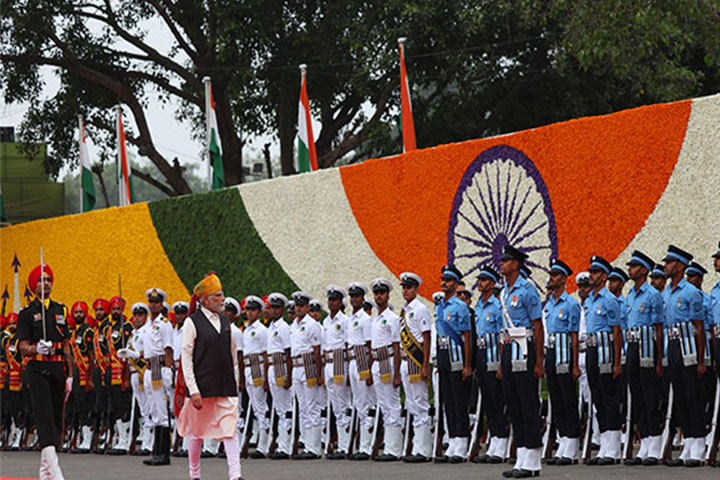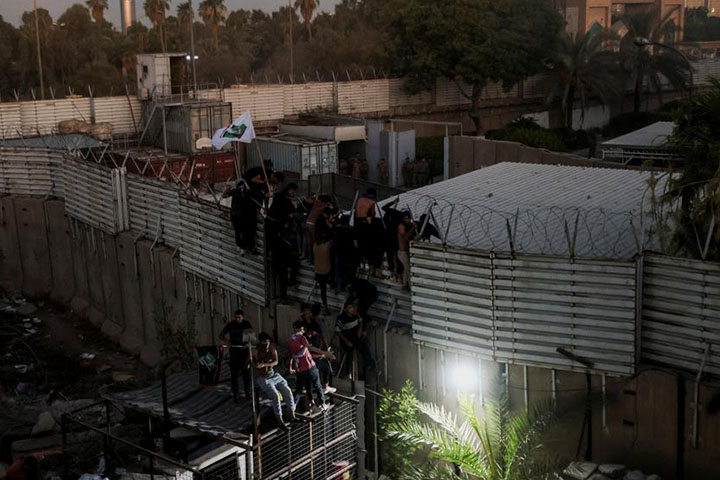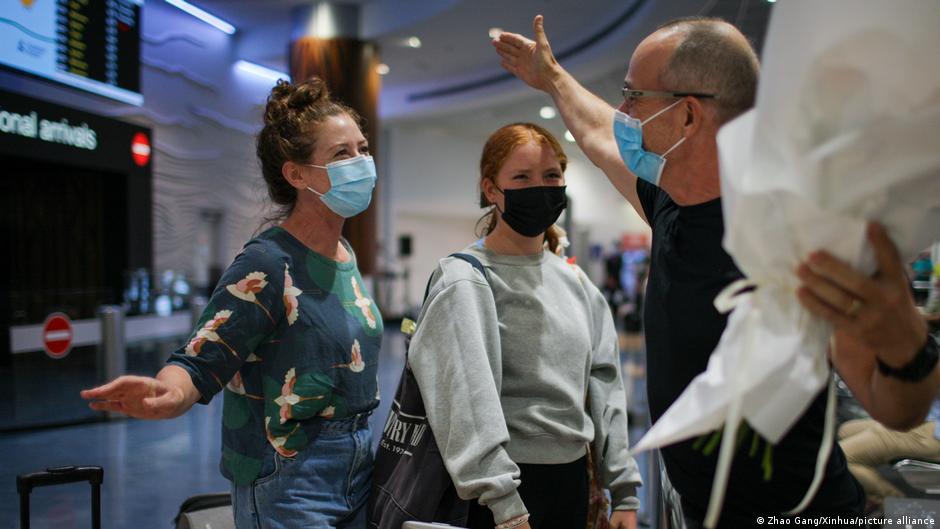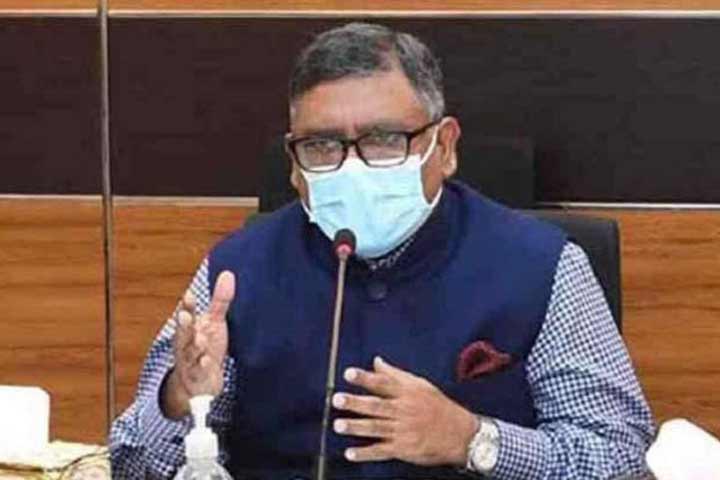China "Pushes the Boundaries" with its expanding borders
In late 2021, Chairman Xi Jinping famously told President Joe Biden, "Aggression or hegemony is not in the blood of the Chinese nation. Since the founding of the people's republic, China has never started a single war or conflict, and has never taken one inch of land from other countries." However, such a claim is demonstrably false, as China recklessly pushes forward its boundaries on land and at sea.
Including Bhutan and India, along their shared rugged, mountainous frontier, China is pushing forward wherever it can to forge a fait accompli on the ground. It is doing the same with illegal territorial claims in the South China Sea and attempting the same in Japan's Senkaku Islands.
The Center for Strategic and International Studies (CSIS) in the USA provided an assessment of new People's Liberation Army (PLA) infrastructure near the Indian border. It noted, "China is currently undertaking a major expansion of its infrastructure that is enhancing its ability to project military power along its western frontier" in both Tibet and Xinjiang.
The CSIS report revealed China is constructing or upgrading dozens of airports and heliports, supplemented by new roads, rail and other infrastructure that enhance PLA logistics by permitting greater quantities of troops, weapons and supplies to be shuttled closer to the frontier.
It added, "The pace of development in the region accelerated following standoffs and skirmishes between China and India along disputed portions of their border in 2017 and 2020." The 2017 reference is to the Doklam Plateau, where PLA engineers attempted to build a road. Even more serious was the outbreak of bloody violence at Galwan Valley in Eastern Ladakh in 2020.
In the rugged and unforgiving high-altitude terrain of Tibet and Xinjiang, airports and heliports grow exponentially in importance. They are vital for moving personnel and equipment into the area, plus they serve as launch pads for reconnaissance assets and potentially strike missions.
CSIS assessed: "The airpower buildup taking place on China's western frontier is sweeping in scale. Based on analysis of satellite imagery and other open-source material, China Power has identified 37 airports and heliports within Tibet and Xinjiang that have been newly constructed or upgraded since 2017 ... At least 22 of these are identifiable as military or dual-use facilities, or are expected to be once they are completed. The pace of this activity sped up significantly in 2020. That year alone, China began constructing seven new air facilities and initiated upgrades at seven others."
Much of the construction is occurring in Tibet. All five existing dual-use airports have received new terminals, hangars, aprons and runways since 2017, while four new airports have been constructed less than 60km from the Indian border. For example, Lhuntse, Ngari-Burang and Shigatse Tingri Airports fill glaring gaps in the PLA's coverage. The dual-use Shigatse Peace Airport is the closest to Doklam, and it has received a large underground facility that has at least three entrances.
CSIS added: "The PLA is also significantly scaling up its ability to conduct helicopter-based operations through the construction of at least five new heliports in Tibet, and the upgrading of two heliports. These heliports, which are operated by PLA Army aviation units, are dotted throughout Tibet, stretching from Rutog County in the west to Nyingchi City in the east. The addition of these heliports stands to significantly enhance PLA operations in the mountainous region, since helicopters are capable of manoeuvring in ways that aeroplanes and ground equipment cannot."
As for Xinjiang, at least 15 airports have been upgraded since 2017, seven of which are military or dual-use. One example is Hotan, 240km from the Indian border. It has a new runway, additional tarmacked areas and an expanded air defense complex.
Three new airports have started construction in Xinjiang since 2019, including Tashkorgan near the border junction with Pakistan, Afghanistan and Tajikistan.
Nonetheless, CSIS explained: "Despite the military benefits that China's investments in the region have brought, the PLA faces several notable disadvantages compared to India. Much of China's side of the border is situated on the highest portions of the Tibetan Plateau, which is often described as the 'roof of the world', owing to its high elevation. Twenty of China's airports and heliports within Xinjiang and Tibet are located more than 3,000m above sea level..."
Such altitudes present massive operational challenges for the PLA. Thin air affects the performance of aircraft taking off, which in turn requires longer runways and aircraft may not be able to carry full weapon, cargo or fuel loads. Cold and harsh weather adds its own challenges too.
Official Chinese figures reveal that Tibet's highway system grew 51 per cent from 2015-20 to a total of 11,820km. In the same period, Xinjiang's highway network grew from 17,830km to 20,920km. As well as enhancing economic development, these roads assist the PLA in moving supplies. For instance, at least eight roads stretching from the G219 highway towards the Indian border are being constructed. The PLA would be able to use them to quickly reposition troops if another Galwan Valley confrontation occurred, for example.
Completed in 2021 and reducing travel time by eight hours, another new road connects Nyingchi to Medog County in eastern Tibet. Nyingchi hosts the headquarters of the PLA's 52nd and 53rd Combined Light Infantry Brigades, showing how critical such new routes are in spreading the influence of the PLA.
Xinjiang's rail network has grown quickly too, from 5,900km in 2015 to 7,800km in 2020. New lines help connect military bases and airports. However, Tibet's topography makes the creation of new railways very difficult, and the region boasts only 800km of tracks. Nevertheless, the first high-speed railway from Lhasa to Nyingchi opened in 2021 and, soon after it opened, it carried PLA personnel to an exercise area.
China's "salami slicing" tactics, used so successfully in the South China Sea, are a reliable indication of how China is acting in other border areas too. One victim is Bhutan, with Beijing using such tactics against it for years. Afterwards, China attempts to formalize its theft of land by engaging in negotiations, but this type of bullying has negatively impacted bilateral negotiations. China lays claim to 269km2 of Bhutanese territory in Doklam in the west, 495km2 of the sacred Buddhist area of the Beyul Khenpajong in the north, and 650km2 of the Sakteng wildlife sanctuary in the east.
China has trespassed the Bhutan border and rapidly constructed settlements such as Gyalaphug village. Sudha Ramachandran, writing for the Jamestown Foundation think-tank in the USA, noted: "Beijing appears to be robustly altering the status quo on the ground along its border with Bhutan. Recent satellite images reveal the staggering pace at which the PRC is building townships along a river valley in Beyul Khenpajong located in territory it claims in northcentral Bhutan." Currently, the settlement contains more than 200 structures, including roads, hydropower stations, communication facilities and military/security outposts built over the past decade.
China has faced little pushback from Bhutan, exacerbated by the difficulty in accessing the area from the Bhutan side.
A 1998 agreement was supposed to see both countries "refrain from taking any unilateral action to change the status quo of the boundary," but Chinese words are as cheap as the paper they are written on. The PLA is particularly enraptured with the tri- junction border at Doklam, as dominating this area would improve China's military position versus India.
Ramachandran said, "The rationale behind Beijing's land grab is not entirely clear. Unlike Doklam, which is near India and where the PRC has also pressed ahead to alter the situation on the ground through construction of roads and bunkers, control over Beyul Khenpajong would have no strategic value in the event of an India-China war." Regardless, "Parallel to changing the status quo on the ground in its favor with its infrastructure-building activity, China is keen to enhance its economic and other presence in Bhutan. This would help the PRC to create a favorable environment for itself while increasing its leverage."
When it comes to China's outrageous maritime territorial claims and bullying at sea, state media and government channels are spouting increasingly ridiculous messages. For example, the Global Times tabloid tweeted on 27 January that the China Coast Guard (CCG) had expelled "Japanese vessels near the Diaoyu/Senkaku Islands, which are an inherent part of China's territory, and CCG vessels carry out maritime rights protection and law enforcement activities in China's jurisdictional waters in accordance with the law. We urge the Japanese side to immediately cease all illegal activities in this area and ensure that similar incidents do not occur again."
Such statements are figments of China's imagination. Beijing has also succeeded in antagonizing the Philippines, causing Manila to become more strenuous in its criticism of blatant Chinese interference. After Manila stated it would modernize military facilities in its northernmost province of Batanes, Chinese Foreign Ministry spokesperson Wang Wenbin warned the Philippines to "tread carefully and don't play with fire".
Subsequently, a Philippine Department of National Defense press statement issued on 10 February sternly warned China: "The Defense Department stresses that Batanes is Philippine territory, and China has no business warning the Philippines about what it does within its own territory. China's pronouncements and acts are the main reasons for its low credibility with the Filipino people. China should refrain from engaging in provocative rhetoric and activities if it truly wants to earn the widespread trust and respect that it is trying so hard to gain but has, so far, been unable to."
Chinese encroachment has caused growing resentment from countries like the Philippines and Japan, and its 2020 gambit against India in Eastern Ladakh in mid- 2020 resulted in awakening Indian ire too. China has refused to return to the April 2020 status quo in Ladakh, despite numerous talks and disengagement of troops from friction points. The PLA carved out for itself important buffer zones, largely from Indian territory and causing Delhi to lose control of areas it formerly patrolled, which is precisely how Chinese salami slicing proceeds. Once the PLA has gained a foothold, it is impossible to dislodge it.
Both China and India worked hard to strengthen their respective infrastructure after the Eastern Ladakh confrontation, and it is estimated both sides keep around 50,000 troops in Ladakh. In October 2021, China began constructing a new road and 300m- long bridge over the strategically important Pangong Lake so soldiers can move quickly to either side of the lake and areas adjacent to the Line of Actual Control (LAC).
Construction of a bigger and wider bridge started in 2022, which would even allow armored vehicles to cross. In a conflict, bridges are vulnerable; however, in scenarios beneath that, bridges are an important logistical tool for the PLA.
To the west of these bridges, the PLA established what is believed to be a permanent divisional-level headquarters and garrison, just 6km from the LAC. Settled permanently from mid-2020, the camp expanded throughout 2021.
As well as revetments and a company's worth of armored vehicles, there are shelters presumably for artillery and antiaircraft systems. It functions as a node connecting troops at Pangong with the Western Theater Command headquarters. After work began in August 2021, a second radome was constructed on a mountain peak north of the lake, about 6km from the headquarters facility. Such construction efforts show that China has no intention of retreating; rather, it is deepening its foothold.
A report published last year by the Indo-Pacific Security Program of the Center for a New American Security, concluded: "While the Chinese and Indian militaries have since pulled back forces from the most contentious standoff sites where the 2020 build-up occurred and established temporary buffer zones, both sides retain high numbers of troops forward deployed along the disputed frontier, and there are several flashpoints that could erupt into another border crisis at any time ... With both China and India enhancing infrastructure and introducing new and advanced weapons systems on their sides of the disputed border, combined with forward deployments and heightened lack of trust, the chances for continued standoffs that could erupt into local or even full-blown conflict remain high."
The same is true everywhere that China is blatantly pushing forward with coercive or stealthy methods. Unless victims strenuously stick up for themselves, China is only emboldened to continue such illegal moves to enlarge its territory. In a sense, Xi was right - no, China "has never taken one inch of land from other countries" - for it has helped outside to hundreds of square miles instead.
Source: Web India
16 Feb 2024,14:28








 Live Tv
Live Tv






